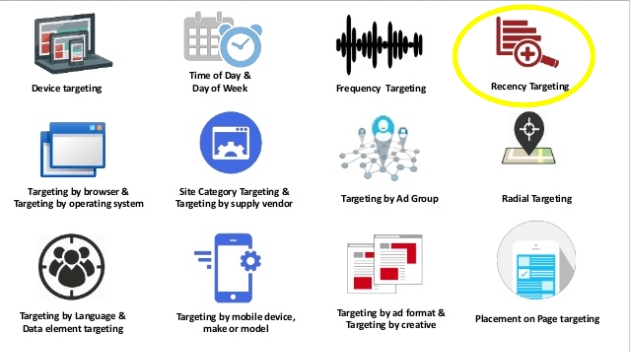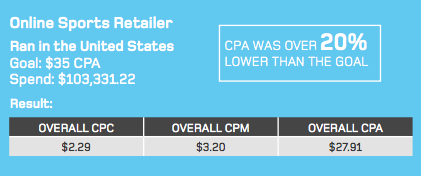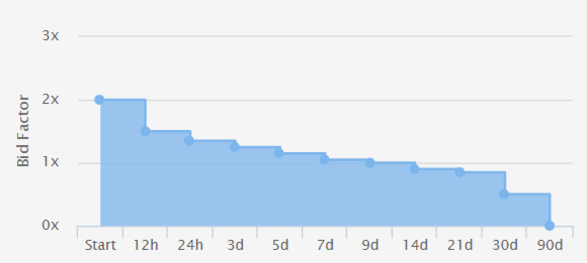The programmatic display advertising channel has been getting a lot of attention from marketers as of late because of sweeping changes to the auction ecosystem. In case you haven’t heard, YouTube is no longer available to display advertisers through their demand-side platform or trading desk and is now exclusive to Google’s Display Network (GDN). At the same time, Spotify and LinkedIn have appeared on the scene and are now available for marketers to bid on at the trading desk! As interest in programmatic display soars due to the increase in control it gives advertisers, new ad networks are popping up on the scene.
Changes to the display landscape means advertisers are having to relearn how to target and retarget customers in the most effective way possible. Customers have already grown tired of banners and often suffer brand saturation if not targeted effectively and strategically.

Retargeting “allows you to focus on the people who are in-market and remind them how great your product is or why going with your service is the right decision,” says Jason Parks. However if retargeted too often with the same message, consumers will start to ignore your brand and so advertisers have to find a the right balance of ad delivery, frequency and cater messaging accordingly. In addition to the frequency in which ads are delivered, recency must also be taken into account, which is data that breaks down a cookie’s age and targets users based on how recently they’ve been to the advertiser’s site. Due to available technology and advertiser expertise, recency data is often overlooked despite being one of the most effective levers to pull in a retargeting campaign.
A Recency Realization
Recency data gives marketers and advertisers the ability to segment audience groups by how recently they’ve visited a website or landing page. It may seem obvious to include the recency variable as a guiding factor for all retargeting campaigns, but some marketers don’t even know this data is available, focusing instead on other data points.

The ability to timestamp your traffic and target audience segments with personalized ad messaging is a superpower. The reason recency data is so good at driving conversions for display campaigns is because it’s far more effective (and relevant) to show your ad to someone who just visited your website than someone who saw your website months ago and hundreds of other websites since.
According to Sociomatic “The most intelligent bidders on the market are using automation to adapt messaging and investment strategy as each user passes through different stages of the customer lifecycle, from acquisition to conversion to retention and even on to advocacy.” Arguably programmatic marketers can’t effectively adapt messaging through different stages of the customer lifecycle without recency data.
With an awareness of where potential customers are in the buying cycle using recency data, marketers can create different simultaneous offerings strategically; know exactly what to say to prospects based on when they had their last brand touchpoint; increase their ad message relevancy; attract more clicks and increase the effectiveness of their retargeting campaigns. So why don’t more marketers use recency data to guide their ad creation and audience segments?
Often demand-side platforms don’t include recency data and similarly while Google has this data, they don’t make it available to marketing professionals. So it’s not exactly your fault dear retargeting enthusiast! That said there are of course platforms that do give display marketers access to recency-data (or we wouldn’t be talking about it) and with a bit of know-how, marketers can inject this data into their ad campaigns in no time.
A Step-by-Step to Retargeting with Recency Data
Step 1: Pick a Demand-Side Platform
The first step to a retargeting campaign using recency data is to choose a DSP that has recency data included. Choosing a platform with recency data means marketers can break their audience down into smaller segments (10 minutes, 24 hours, 2 days or whatever works) and increase bids on the most valuable segments.
Step 2: Create Retargeting Tags
Step two of retargeting is setting up retargeting tags to collect data. Visitors to your website can be “cookied” with a retargeting tag and then segmented in your DSP. That list of website visitors can be segmented and different audience groups can be formed according to recency (or any other major data point). Of course the most appropriate segments depend on which brand and which market you’re in. Either way, knowing who visited your website yesterday and who visited last week is already extremely useful information for retargeting.
Step 3: Create a Schedule
Once marketers have empowered themselves with a DSP platform that gives them access to recency data and plugged all of that rich information into their retargeting campaign audience segments, they can create recency schedules, as shown below.
Step 4: Optimize and Repeat!
Once a recency schedule has been built, the campaign will have already been running for a significant amount of time and the only thing left to do is tinker with the results to maximize performance. Using “new” recency data (acquired and optimized once a week, depending on the size of the budget), you’re able to adjust the recency schedule to best fit the ever-changing campaign.
Recency Data Case Study
Using recency data in this case study, one online sports retailer wanted to reduce their cost per acquisition (CPA) to $35. In combination with this retargeting strategy, they used Acquisio’s ATD technology and team to work towards their display advertising goals. The team helped the retailer to do two key things during the campaign:

- They bid aggressively within 12 hours of a new website visit, reducing superfluous costs and increasing the effectiveness of bids.
- They avoided bidding “on a later period of time in a cookie’s life when the chance of a conversion is much lower. For example, reducing bids to 0 after 75 days, when a cookie normally expires after 90 days, means that those 15 days of spend do not go to waste, thereby improving the effectiveness of the campaign.”
The results of the campaign surpassed their expectations by 20% and actually resulted in a CPA as low as $27.91.
Recent Never Gets Old
Your brand will never get old to consumers if you know how to use recency data to talk to them. Using the four steps above, brands can use recency as the retargeting framework to make their next ad campaign more effective.
Recency data is a more personalized way of retargeting customers. It gives marketers superpowers that can increase the relevancy of their retargeting campaigns and can also dramatically lower CPA, as we saw in the case study above. There are many reasons why recency should not soon be forgotten, and marketers know it.
If you want more information about retargeting tips and techniques, stay tuned to our blog for upcoming posts and discussion on the topic.
Image Credits
Feature Image: Unsplash/chuttersnap
All screenshots by Stewart Sullivan. Taken March 2017.
Image 1: Screenshot from The Onion’s Twitter
Image 2: Screenshot from Acquisio Slideshare Presentation
Image 3: Screenshot of internal data from Acquisio’s trade desk
Image 4: Screenshot from Acquisio pdf on recency data




